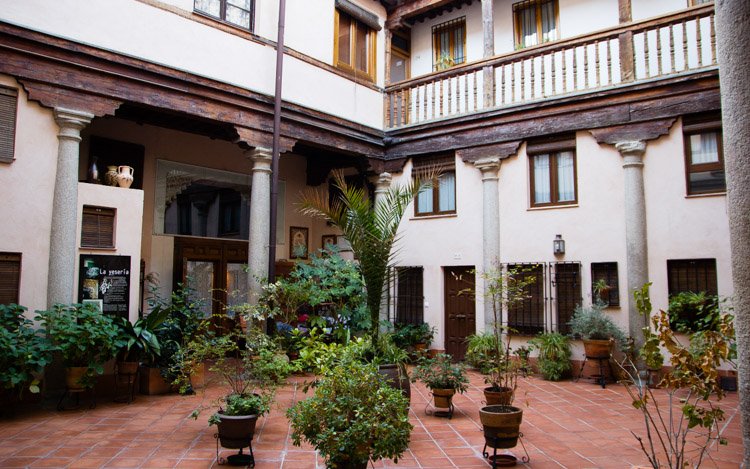
Toledo is protected by the city walls, but also by the river, which surrounds 3/4 of the perimeter of the city. This made Toledo almost impregnable.
Therefore the access to Toledo is controlled by the gates of the citywalls, but also by its bridges.
The best way to see most of them is following the panoramic view around the river.
Bisagra Gate
It is a double gate with a yard of arms indoors. The interior gate dates from the Muslim period, and the exterior gate was added to the original in the 16th century. This new gate is a huge monument that was dedicated to Carlos V and designed by Alonso de Covarruvias, in Renaissance style . Its two large circular towers are united by the entrance arch, surmounted by the imperial coat of arms of enormous proportions. On top of the gate there is a Guardian Angel, with his sword, that protects the access to the city. The governor of the gates lived in the inner towers and was in charge of collecting the toll.
Alcántara Gate and bridge
This gate is the access to the Eastern part of the city. The gateway is connected to the Alcantara Bridge that dates back to Roman times, this bridge was used not only by Toledo but also by everyone who crossed Hispania by using Roman roads. This gate is significant for Toledo’s defenses and, even though this gate doesn’t have any large monumental decorations, it is a military inventiveness. If we access the first of its horseshoe arches, we face a wall turning 90 degrees to the right where we could continue going up the hill through the second arch. This form of ‘elbow’ is an important prevention from any possible troops on horseback who tried to storm the city, since it reduces their speed. It was commonly used in Islamic fortresses.

Gate of the Sun
It was originally called ‘Herrerías’ (blacksmiths), it was an access to the neighborhood where this guild used to be. Now it is called ‘del sol’ (of the sun) because of the Sun that the gate is decorated with. It probably dates back to the 10th-11th centuries, the times of Muslim rule, but what is left is mostly a reconstruction from the 14th century, in Mudejar style.
Cambron Gate
It received the name of a plant that grows around. Even though there was a gate in this place during the Islamic rule, what we see today is a Renaissance style gate from 16th century. The two towers and a slate in between them frame the royal shield. Curiously, it is worth to look at reused materials in the fundamentals of arches; there are two funeral memorial stones with Arabic inscriptions. This gate is the access to the Jewish Quarter.

Puerta de Alfonso VI
It is also called ‘Puerta Vieja de Bisagra’, this gate is located close to the previous one. Until the 10th century it had horseshoe arch for reusing the granite blocks of the ruins of the nearby Roman circus. It was reformed in 13th century and from then it has an elbow form.



